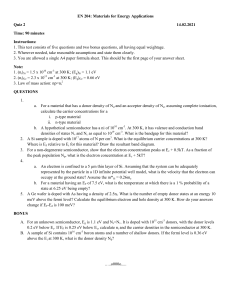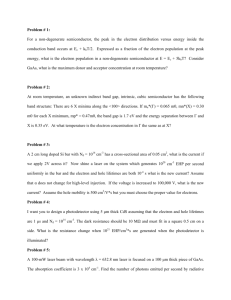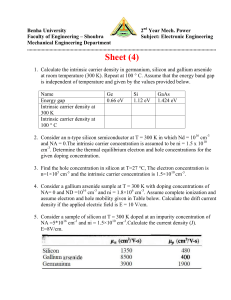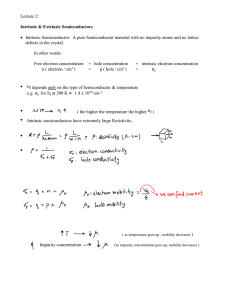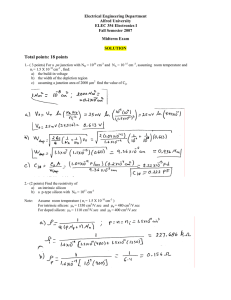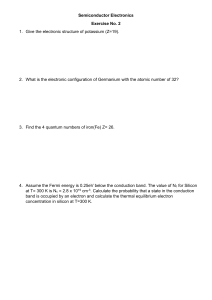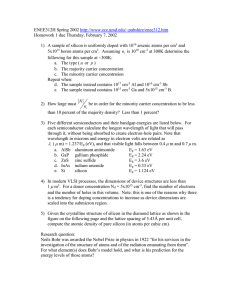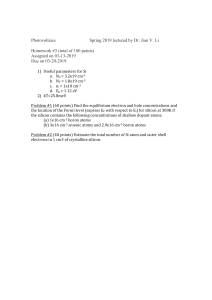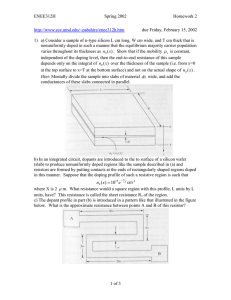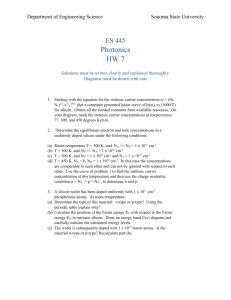固態電子元件導論 第五章習題 Introduction to Solid
advertisement
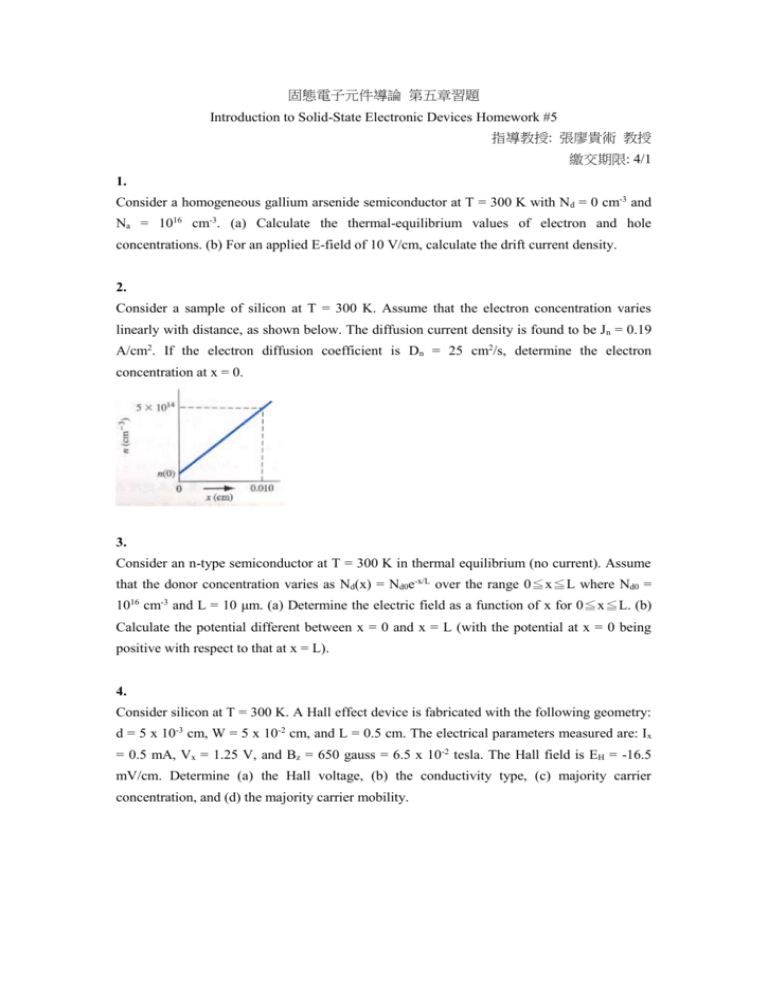
固態電子元件導論 第五章習題 Introduction to Solid-State Electronic Devices Homework #5 指導教授: 張廖貴術 教授 繳交期限: 4/1 1. Consider a homogeneous gallium arsenide semiconductor at T = 300 K with Nd = 0 cm-3 and Na = 1016 cm-3. (a) Calculate the thermal-equilibrium values of electron and hole concentrations. (b) For an applied E-field of 10 V/cm, calculate the drift current density. 2. Consider a sample of silicon at T = 300 K. Assume that the electron concentration varies linearly with distance, as shown below. The diffusion current density is found to be Jn = 0.19 A/cm2. If the electron diffusion coefficient is Dn = 25 cm2/s, determine the electron concentration at x = 0. 3. Consider an n-type semiconductor at T = 300 K in thermal equilibrium (no current). Assume that the donor concentration varies as Nd(x) = Nd0e-x/L over the range 0≦x≦L where Nd0 = 1016 cm-3 and L = 10 μm. (a) Determine the electric field as a function of x for 0≦x≦L. (b) Calculate the potential different between x = 0 and x = L (with the potential at x = 0 being positive with respect to that at x = L). 4. Consider silicon at T = 300 K. A Hall effect device is fabricated with the following geometry: d = 5 x 10-3 cm, W = 5 x 10-2 cm, and L = 0.5 cm. The electrical parameters measured are: Ix = 0.5 mA, Vx = 1.25 V, and Bz = 650 gauss = 6.5 x 10-2 tesla. The Hall field is EH = -16.5 mV/cm. Determine (a) the Hall voltage, (b) the conductivity type, (c) majority carrier concentration, and (d) the majority carrier mobility.
